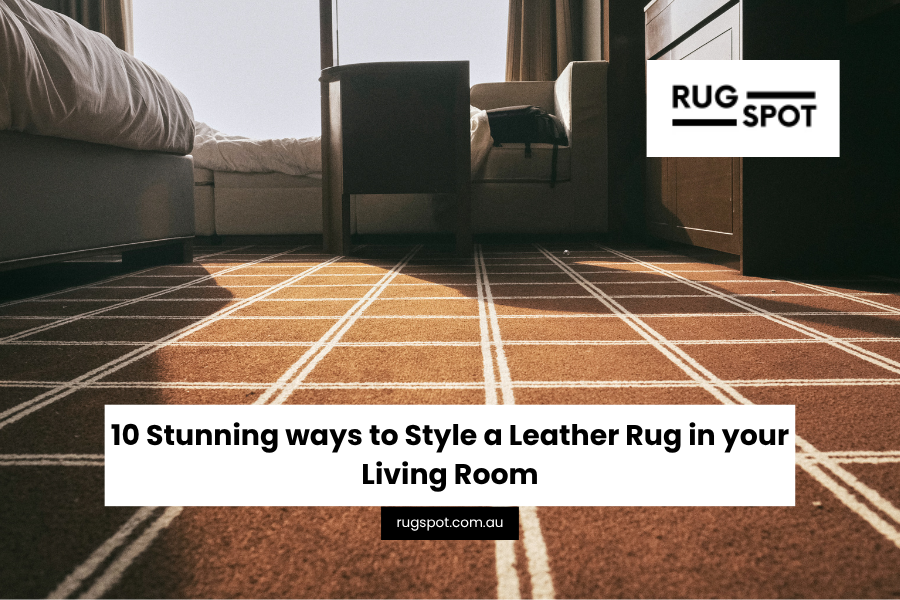How to clean rugs
Preparing to Clean Your Rug
Before you begin cleaning your rug, make sure you have all the necessary tools.
Tools and Supplies Needed
- Vacuum cleaner with an upholstery attachment
- Mild dish soap or carpet shampoo
- White vinegar
- Rubbing alcohol
- Paper towels
- Soft-bristle brush or sponge
- Bucket
- Rubber gloves
- Garden hose (for outdoor cleaning)
- Wet-dry vacuum
- Tarp, drop cloth, or large piece of plastic (for outdoor cleaning)
Regular vacuuming is crucial in keeping your rug clean and free of dust mites and pet hair. Start by using the beater bar on the vacuum cleaner on both sides of the rug before switching to the upholstery attachment for a more thorough cleaning. Vacuum slowly over each area multiple times until all dirt has been removed from between the fibers.

Key Takeaway: Regular vacuuming is essential to keep your rug clean and free of dust mites and pet hair. Gather all the necessary tools, including a vacuum cleaner with an upholstery attachment, mild dish soap or carpet shampoo, white vinegar, rubbing alcohol, and paper towels.
Spot-Cleaning Stains and Spills
Spot-cleaning stains and spills is a critical part of rug maintenance. Blotting the stain on your rug should be your first step, as it helps to remove excess liquid or dirt before further treatment. Gently press a cloth or paper towel onto the affected area to lift any dirt that has been absorbed into the rug fibers.( Visit this article which specifies of rug stain removal tips )
Create a cleaning solution using white vinegar, dish detergent, and warm water in a spray bottle. Test this solution on an inconspicuous area of the rug first to ensure colorfastness before applying it directly onto the stain. Gently rub in circles until it begins to lift away from the fibers, then use another clean cloth or paper towel to soak up any remaining moisture. If necessary, repeat these steps for tougher stains such as pet hair and dust mites.

Key Takeaway: Spot-cleaning stains and spills is essential for keeping your rug looking its best. A thorough cleaning with either a machine or by hand is necessary to maintain the pristine state of your rug.
Deep Cleaning Your Rug with a Machine or by Hand
For deep cleaning your rug, either a machine or hand-cleaning can be used depending on the type and condition of the rug.
For Synthetic Rugs: If your synthetic shag pile needs a thorough refresh, renting or buying a carpet cleaner is the way to go. Pre-treat any stains and high-traffic areas with an enzyme-based cleaner or white vinegar solution, depending on the fabric type. This helps break down dirt particles so they can be removed more easily during washing and rinsing.
Using a Machine: Start by vacuuming first before filling up the tank with hot water mixed with detergent according to the manufacturer's instructions. Move slowly over each area of your rug, making sure not to overlap strokes.
For Wool Rugs: Delicate wool rugs that have been stained should be spot-cleaned with a gentle detergent. Use cold water and a mild detergent specifically designed for wool.
Hand Cleaning: For a thorough clean, use a sponge or soft-bristle brush to work the cleaning solution into a lather on the rug. Let the cleaner sit on the rug for five minutes before rinsing.

Key Takeaway: Deep cleaning your rug can be done using a machine or by hand, depending on the type and condition of the rug.
Drying and Finishing Your Rug Cleaning Process
Once you have finished washing your rug, it is important to properly dry it and complete the cleaning process.
Removing Excess Water: To begin drying your rug, remove as much excess water as possible. Press down on the rug with a rolled-up towel or use a wet-dry vacuum cleaner, being careful not to damage any fibers.
Air Drying or Using a Dryer: Let your rug air dry completely or use an electric clothes dryer set on low heat. Be sure not to leave it unattended when using an electric dryer.
Brushing and Finishing: Once all moisture has been removed from your rug, brush out any remaining dirt particles and debris before allowing it to fully air dry again. This will help keep your pile looking neat while also helping restore its original shape over time.

Key Takeaway: Extract as much moisture as possible from the rug's fibers using a towel or wet-dry vacuum before air drying or using an electric clothes dryer on a low heat setting.
Tips for Specific Types of Rugs
Wool Rugs:
- Cold Water Process: Clean with cold water to prevent fiber damage.
- Avoid Harsh Chemicals: Use a mild detergent specifically designed for wool.
Silk and Delicate Rugs:
- Professional Cleaning: Best left to professionals due to their delicate nature.
- Minimal Water: Avoid using excessive water.
Synthetic Rugs:
- Durable: Can handle stronger cleaning solutions and hot water.
- Regular Maintenance: Vacuum regularly to prevent dirt buildup.
Jute and Sisal Rugs:
- Avoid Water: Water can cause these rugs to brown. Use dry cleaning methods.
- Dry Shampoo: Apply dry rug shampoo or baking soda, then vacuum.
FAQs on How to Clean a Rug Yourself
How do I clean my rug myself? Start by vacuuming both sides of the rug using a low-powered vacuum cleaner and an upholstery attachment if available. Next, use a mild detergent or carpet shampoo in warm water to spot-clean any stains with a soft brush. Let the wet area dry out fully before going any further. Finally, fluff up fibers with your hands or use a stiff-bristled brush for more stubborn areas. Always check manufacturer instructions first, especially for natural fibers.
Can I clean my area rug myself? Yes, you can clean your area rug yourself. Start by vacuuming both sides of the rug with a vacuum cleaner that has an adjustable setting for rugs. Then spot-treat any stains using a mild detergent solution or store-bought carpet cleaner specifically designed for upholstery and carpets. Let the rug air dry completely before placing it back in its designated area.
How do you deep clean a dirty rug? To deep clean a dirty rug, start by vacuuming the surface to remove any loose dirt and debris. Combine 1/4 cup of mild detergent with one gallon of warm water in a bucket or bowl to create the cleaning solution. Using a sponge or cloth dampened with the cleaning solution, gently scrub the rug's surface in circular motions until all stains are removed. Rinse the soap off using cold water and let it air dry completely before putting it back on your floor.
How do you clean a large rug at home? If possible, move the area rug outside and follow the steps above. You can do this with the help of a partner; the process is easier if you roll it up and carry it out. If the backyard is not an option, place a large waterproof tarp in the middle of the living room, then relocate your area rug onto the flat surface. The cleaning tips will be similar. First, apply rug shampoo or a solution of mild dish detergent to the rug (sparingly). To remove the sudsy solutions, apply damp towels to absorb the soaps. Because you will not be hosing the soap off indoors, make sure you have a shop vac on hand to absorb the excess water. To air-dry, lift the area rug and place it on top of something that helps with airflow, like some chairs (as long as they are not upholstered). Standing fans will help with the process. Once the rug is dry, return it to its original spot and vacuum.
Conclusion
Cleaning your rug yourself can be a rewarding experience, and the result is often worth it. With proper care, you'll have no problem keeping your rugs looking beautiful. Regular maintenance, spot cleaning, and occasional deep cleaning will help extend the life of your rug and maintain its appearance. Follow the tips and steps outlined in this guide to achieve the best results.
Rugspot is passionate about helping you find rugs that match your style and budget to tie a room together, adding warmth, texture, and personality to your home.




